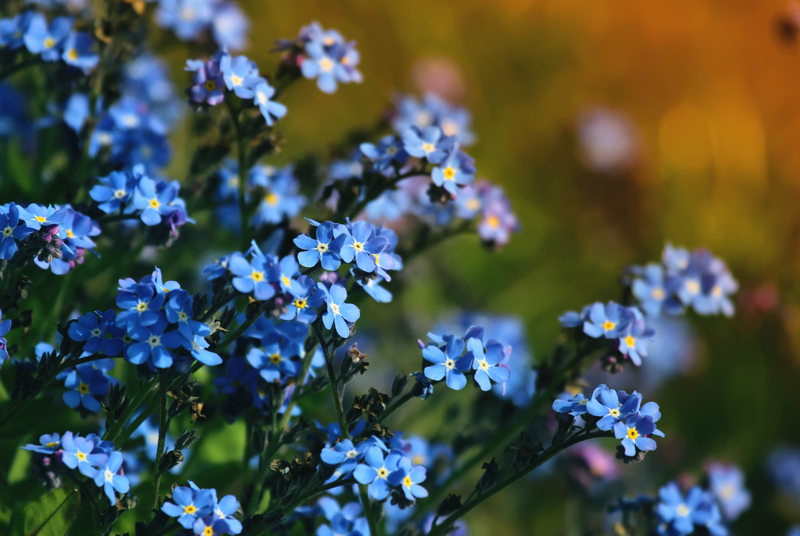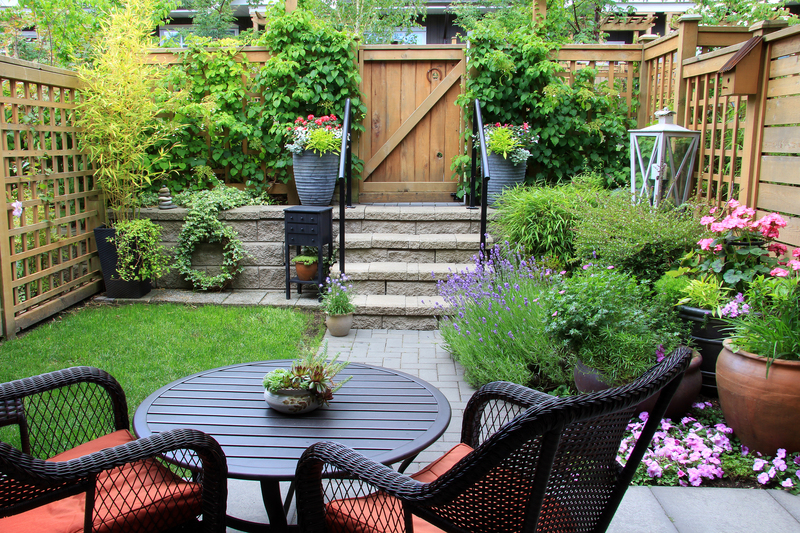Winter-proof Your Plants with These Handy Tips
Posted on 04/06/2025
Winter-proof Your Plants with These Handy Tips
As temperatures drop and frosty nights become more common, winter-proofing your plants is essential for every gardener. Whether you have a lush outdoor garden, a few cherished pots on your balcony, or a variety of indoor greenery, taking proactive steps now can ensure that your beloved plants thrive through the coldest months. This comprehensive guide will provide you with actionable strategies, expert advice, and seasonal insights to help you protect your plants in winter. Read on for the best tips and techniques to shield your plants from winter's chill and keep them healthy until spring arrives.
Understanding the Impact of Winter on Your Garden
Before diving into specific winter plant protection methods, it's important to recognize the challenges the cold season poses for your plants. Frost, snow, freezing winds, shorter days, and fluctuating temperatures can all harm vegetation. Some plants are more resilient than others; however, even hardy species can suffer if not properly cared for.
- Freezing temperatures can damage leaves, roots, and stems.
- Frost can cause water inside plant cells to expand, rupturing cell walls and leading to wilting and blackened foliage.
- Winter winds draw moisture from both soil and plant tissues, resulting in desiccation (drying out).
- Sudden temperature fluctuations can stress plants, making them susceptible to disease.
By understanding these risks, you can better winterize your plants to withstand the colder months.

1. Know Your Climate Zone
The first step to successful winter plant protection is identifying the climate zone in which you live. The USDA Plant Hardiness Zone Map divides regions by average annual minimum winter temperatures. Knowing your zone will help you select plants that are more likely to survive the local winter and inform your protective strategies. Research which species require extra attention and which can weather the cold without intervention.
2. Choose and Prepare the Right Plants
Select Hardy Plants
Whenever possible, cultivate plants that are naturally adapted to your climate. Native and cold-hardy varieties are generally more resistant to frost and snow. If you're planting new shrubs or flowers, choose those with a reputation for winter toughness.
Plant at the Right Time
Late spring or early fall is typically the best time to plant, giving roots time to establish before the threat of winter. Well-rooted plants are far more likely to make it through the cold weather.
Mulch for Insulation
Apply a generous layer of mulch (such as bark, straw, or shredded leaves) around your plants in late fall. Mulching your garden for winter protection acts as a blanket, stabilizing soil temperature and preventing roots from freezing. Mulch also helps to retain moisture as evaporation slows during cooler months.
- Apply 2-4 inches of mulch around the base, avoiding direct contact with stems and trunks to prevent rot.
- Replenish mulch as it settles or decomposes during winter.
3. Water Wisely Before the Freeze Sets In
Proper hydration is crucial for plant survival in winter. Plants continue to lose water even when dormant, especially in windy or sunny conditions.
- Water deeply before the ground freezes to help plants go into winter well-hydrated.
- Avoid watering when frost is imminent as wet soil can increase freezing injury.
- Check moisture levels periodically by feeling the soil 2-3 inches below the surface. If it's dry, water during a warm spell.
4. Shielding Outdoor Plants from the Elements
Frost Blankets and Plant Covers
One of the simplest and most effective ways to protect plants from winter frost is to use physical barriers. Frost cloths, burlap, old sheets, or commercial plant covers can help maintain a few degrees of warmth when temperatures dip overnight.
- Drape fabrics loosely to allow air circulation and prevent crushing delicate branches.
- Secure with rocks, stakes, or clothespins to keep covers from blowing away.
- Remove coverings during the day if temperatures rise above freezing to prevent overheating and promote photosynthesis.
Wrap Tree Trunks and Shrubs
Wrapping the trunks of young or thin-barked trees with horticultural wrap, burlap, or tree guards can protect them from splitting and frost cracks. This is especially important for fruit trees and those with dark bark, which heat up in the winter sun and can suffer damage from rapid temperature changes.
Windbreaks and Shelters
Erect temporary windbreaks using stakes and burlap, or strategically place evergreen branches around more tender plants. This helps shield them from harsh winter gusts that draw out moisture and accelerate freezing.
5. Proper Maintenance for Potted and Container Plants
Potted plants are especially vulnerable to cold as their roots are exposed and less insulated than those in the ground.
- Move pots indoors or to a sheltered spot such as a garage, porch, or basement.
- Elevate containers off the ground to prevent waterlogging and freezing.
- Wrap pots with bubble wrap or burlap to add an insulating layer.
- Group plants together--this creates a microclimate that helps retain heat.
6. Pruning and Cleaning for Winter Health
Prune dead or diseased branches before winter sets in. This not only reduces the risk of pests and disease but also prevents weak limbs from breaking under the weight of snow or ice. Remove fallen leaves and debris from garden beds to discourage overwintering pests.
7. Protecting Tender and Tropical Plants
Plants that originate from warm climates require extra care to survive winter. How can you winterproof tender perennials?
- Dig up bulbs, tubers, or rhizomes such as dahlias, cannas, and gladiolus before the first freeze. Store them in a cool, dry place until spring.
- Consider growing delicate species in containers so they can be easily brought indoors or into a greenhouse.
Indoor Plant Winter Care
If you're moving tropical plants indoors for winter:
- Gradually acclimate plants to lower lighting to avoid shock.
- Keep away from heat vents and drafty windows.
- Increase humidity using trays with pebbles and water or a small room humidifier.
- Reduce watering frequency as growth slows in winter.
8. Greenhouse and Cold Frame Solutions
If you're serious about winter plant protection, investing in a greenhouse or cold frame can be a game changer. These structures capture solar heat and block cold winds, making them ideal for overwintering sensitive plants or starting seedlings early.
- Monitor temperature and humidity inside your greenhouse for optimal plant health.
- Ventilate on sunny days to prevent overheating and excess moisture.
- Use thermal mass (water barrels, stone) to help store heat overnight.
9. Keep an Eye on Pests and Diseases
Don't let your guard down in winter--many pests and diseases overwinter in garden debris or mulch. Regularly check your plants for signs of infestation, and take swift action if you spot trouble. Clean tools and containers before bringing them indoors, as pathogens can hitch a ride into your home.
10. Don't Forget About Wildlife
While winter-proofing your garden, consider the needs of beneficial wildlife. Birds, bees, and other pollinators can struggle during the harshest periods.
- Leave seed heads on some plants as a food source for birds.
- Provide a shallow dish of water and check it regularly to break up ice.
- Keep leaf piles or brush in quiet corners as shelter for insects and small mammals.
Bonus Tips: Smart Gardening for Winter Success
Monitor Weather and Plan Ahead
Stay informed about upcoming freezes and prepare to take action. Keeping an eye on your local forecast allows you to cover plants or water as needed, reducing winter injury.
Selective Fertilizing
Avoid fertilizing late in the season, as this can stimulate new, tender growth that is especially susceptible to frost. Instead, stop feeding about six weeks before cold weather typically arrives.

FAQs on Winter-Proofing Your Plants
How do I know if my plant needs winter protection?
Research the hardiness zone for each plant and compare it to your local minimum temperatures. Container plants, tropical varieties, and newly planted specimens generally need the most protection.
Can I use plastic to cover my plants?
While plastic can be used in emergencies, it's better to use breathable materials like burlap or frost cloth. Plastic can trap moisture and lead to fungal diseases if left on too long or draped directly over foliage.
What should I do after winter?
Remove any protective materials, prune dead or damaged branches, replenish mulch, and feed your plants with a balanced fertilizer as the weather warms up. Gradually reintroduce outdoor plants that overwintered indoors to the garden to avoid shock.
Conclusion: Thrive, Don't Just Survive This Winter
With these expert tips on how to winter-proof your plants, your garden can look healthy and vibrant all year round. A little extra effort in the fall and early winter will pay huge dividends come spring. Remember, the key to successful winter plant protection is preparation, knowledge, and vigilance. Whether you're dealing with icy winds, frosty nights, or snow-covered beds, applying these strategies gives your beloved plants the best shot at making it through winter--but don't forget to enjoy the cozy, quiet beauty your garden offers during the cold months, too!
Ready for a flourishing garden come spring? Start winter-proofing your plants today with these handy and effective tips!

